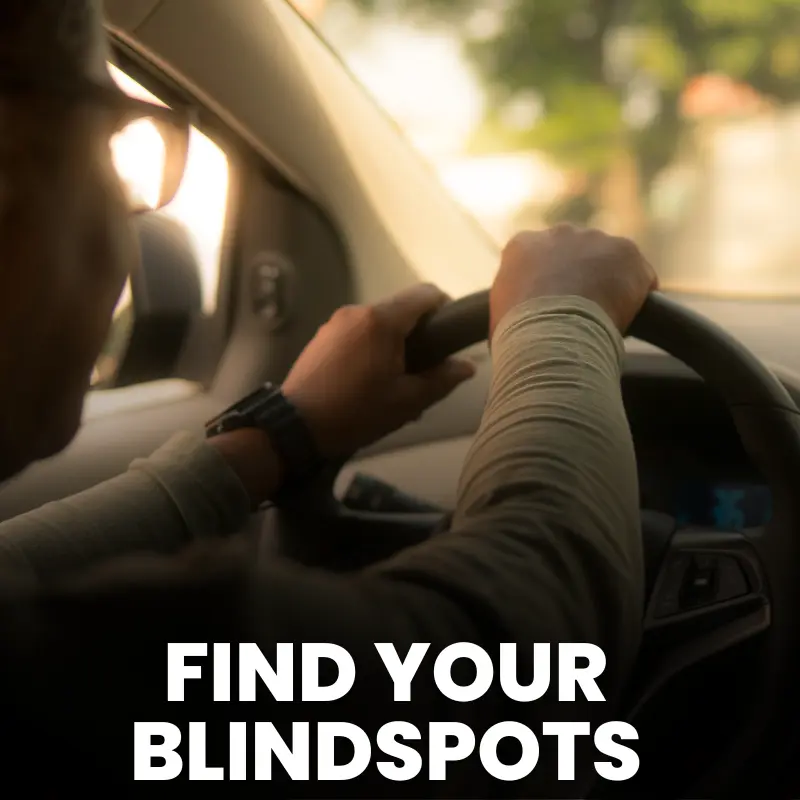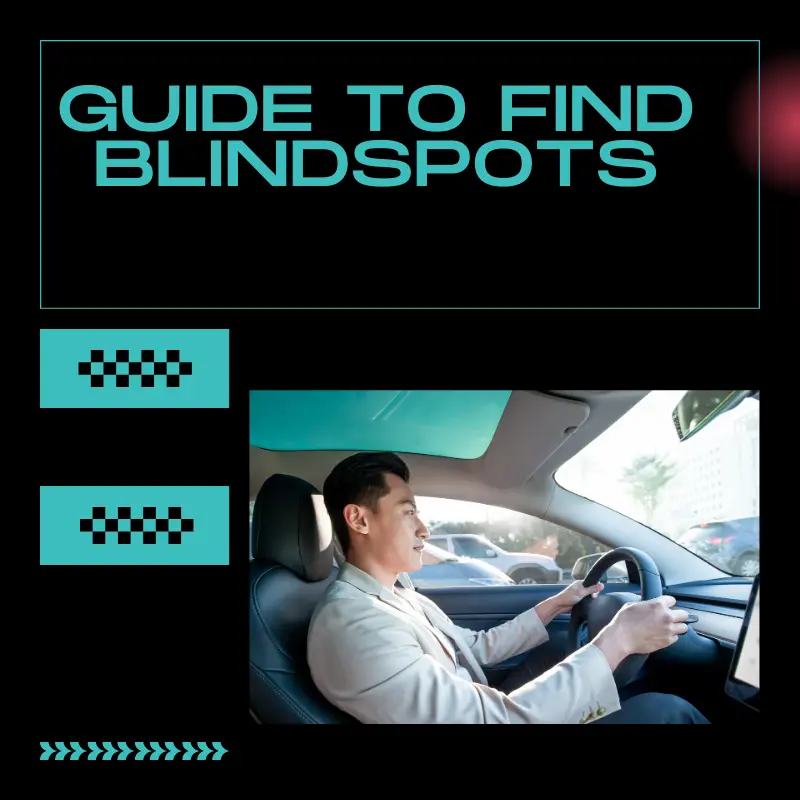Identifying and addressing blind spots is a crucial aspect of safe driving. These are areas around your vehicle that cannot be seen directly through your mirrors. These areas are particularly vulnerable to collisions, as they may hide other vehicles, pedestrians , or obstacles.
Guide to find blind spots:
Here’s a guide to finding and managing blind spots while driving:

- Understand Mirror Placement: Familiarize yourself with the placement and purpose of your mirrors. Most vehicles have three mirrors: the rearview mirror and two side mirrors. The rearview mirror provides a direct view of the rear window, while the side mirrors cover the areas beside and slightly behind your vehicle.
- Adjust Rearview Mirror: Position your rearview mirror to provide the best possible view of the road behind you. Adjust it so that you can see the entire rear window without having to move your head. This maximizes your overall visibility and minimizes blind spots.
Many rearview mirrors have a day/night setting that can be adjusted manually or automatically. The night setting reduces glare by dimming the mirror. Use this feature appropriately to enhance visibility during nighttime driving. - Adjust Side Mirrors: Adjust the side mirrors to minimize blind spots. Many drivers set their side mirrors so that a small part of their own vehicle is visible in the mirrors. This reduces the overlap with the rearview mirror and expands your field of view, covering more of the adjacent lanes.
- Perform shoulder checks: Despite proper mirror adjustments, blind spots may still exist. Always perform shoulder checks before changing lanes or making turns. Turn your head and glance over your shoulder to check for vehicles or obstacles in your blind spots.
If you have passengers in your vehicle, educate them about blind spots and encourage them to assist by being additional eyes on the road. This can be especially helpful during lane changes or merging onto highways. - Utilize Monitoring Systems: Some modern vehicles are equipped with blind spot monitoring systems. These systems use sensors to detect vehicles in your spots and provide visual or audible alerts. While these systems are helpful, they should not replace the practice of physically checking blind spots.
- Avoid Tailgating: Following other vehicles too closely limits your visibility and increases the likelihood of having blind spots. Maintain a safe following distance to allow for better visibility around the vehicle in front of you.
- Stay Vigilant in Parking Lots: Blind spots are not only a concern while driving on the road; they are also relevant in parking lots. Be cautious when backing out of parking spaces, and check for pedestrians, cyclists, or other vehicles that may be in your blind spots.
- Stay Mindful of Large Vehicles: Larger vehicles, such as trucks and buses, have larger blind spots. If you are driving near or behind a large vehicle, be aware that there are areas around them where the driver may not see your vehicle. Try to avoid lingering in these blind spots.
- Signal Your Intentions: Signaling your intentions helps other drivers anticipate your actions. Use your turn signals to indicate lane changes or turns, giving drivers around you the opportunity to react and adjust their positions accordingly.
- Practice Defensive Driving: Adopt a defensive driving mindset by assuming that others may not see you. Be prepared for sudden lane changes or actions by other drivers that may affect your safety.
Conclusion
Regularly checking and adjusting your mirrors, performing shoulder checks, and staying alert to your surroundings are key practices for minimizing blind spots. By incorporating these habits into your driving routine, you contribute to a safer driving experience for yourself and those sharing the road with you.

